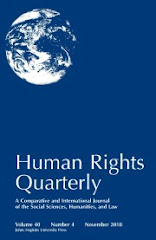From an international criminal law perspective the question of torture has two aspects. The first is substantive: is the use of torture in all situations, even in the most extreme ones, where torture is applied to save the life of innocents (“preventive torture”), unlawful and must the torturer always be punished? I have tried to find a differentiated answer to this question elsewhere. The second aspect is a procedural one: can evidence obtained by means of torture (“torture evidence”) be used in criminal trials? In states governed by the rule of law and fair trial, the answer is a simple and clear “no” if torture was applied by national authorities and the torture evidence is meant to be used in a subsequent criminal trial. In this situation, of “direct use of torture evidence,” national procedural norms provide explicit prohibitions. These national prohibitions are based on human rights law, in particular Article 15 of the UN Convention Against Torture (CAT).
A more complex question also analyzed in this Article is whether such prohibitions also apply to the transnational use of torture evidence, i.e. situations in which torture evidence obtained in one country and is used in another. One may distinguish between two situations: in the first situation, state A, which has a clear prohibition against the use of torture evidence, sends a suspect to state B, known for its torture practices, to obtain such evidence. In the second situation, state A, in a joint investigation with and inside state B, obtains torture evidence and uses this evidence in a domestic criminal trial in its own territory. The difference between these cases is obvious: in the first case, state B’s torture practice is intentionally and consciously used to circumvent state A’s national torture prohibitions. In the second case, the prohibiting state A obtains torture evidence accidentally, without having intentionally used state B’s torture practices. Transnational use of torture evidence must also be distinguished from the supranational use of such evidence, i.e. its use before international criminal tribunals. After a short explanation of the theoretical point of departure with regard to the use of illegally obtained evidence, we will begin with the supranational level, since it may produce some important findings with a view to the transnational use of torture evidence before national tribunals.
Tuesday, January 19, 2010
Ambos: The Transnational Use of Torture Evidence
Kai Ambos (Georg-August-Universität Göttingen - Law) has posted The Transnational Use of Torture Evidence (Israel Law Review, Vol. 42, no. 2, p. 362, 2009). Here's the abstract:





